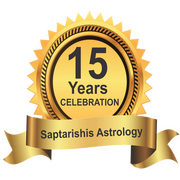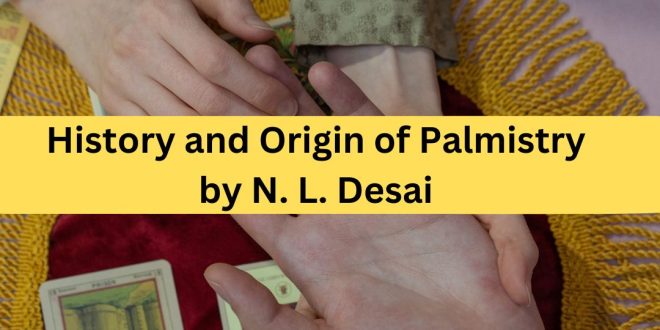Related Articles
‘To Dr Raman With Love’
(Taken From Astrological Magazine Of Raman Saheb, Jan 1957 Issue)
SA Reviewer: Raj Rao
Palmistry is the science of divining the fate of human beings as indicated by the signs and lines on the palm. Fate is nothing but an inevitable result of an unending series of effects of past causes in a predetermined order over which evidently man has no control. In a closely knit sequence of events in our life, happy and otherwise, nature from time to time rewards us or punishes us for our sins of omission or commission.
The more important and chief use of palmistry, however, is that it unfolds before the eyes of the seer in a very systematic and infallible manner the various mental and emotional traits that go into the making of human behavior and characteristics. The science of palmistry further predicts events as they occur and affect the earthly progress of an individual’s life. While explaining the striking differences in men with their wisdom or follies and foibles, magnanimity or meanness and virtues or vices, it suggests whether a man has been born of physically diseased or financially poor parents or with a silver spoon in his mouth. With its simple yet logical exposition of the most innate psychological complexities it enables one to accurately judge the reactions of different persons to various events.
In the East and especially in India, the line of knowledge and the trend of thought in the realm of palmistry appear to have arrived at more comprehensive an endeavor than in the West. In China, the science appears to have been known 2000 to 3000 years before Christ. In India this ampler maturity can be still seen intact in the remarkable systems of predictions embodied both in Shaivite and Jain Samudrika texts.
The history of the origin of Samudrika Shastra is lost in antiquity and to the extent that it is known, it is closely linked up with the mythological lore of the Hindus. Shaiva Samudrika is attributed to Lord Shiva who narrated it to his beloved spouse Parvathi at her request.
In the books on Jain Samudrika, references are encountered to Shaiva Samudrika and Meghavijaygani the author of Hasta-Sanjivani believed that original Samudrika Shastra was a creation of a saga named Samudra. Yet another version has it that it was created by Skanda the son of Shankar but as there was a reference to Ganapati at the Inception of the Shastra, Shankar threw it in the sea out of anger, and it was finally restored due to the entreaties of Lord Indra. It is also stated that Lord Vishnu himself took birth as a Brahmin named Samudra who presented to posterity a tract on this science.
In Samudrika Tilak it is observed that Samudra, the Sea Lord who provided the abode for Lord Vishnu and Goddess Lakshmi, having been enamored by the grace and handsomeness of Vishnu or Narayan representing the God in Man who lived constantly associated in a dual unity with Nara meaning the human being, and who had so completely won over and possessed Lakshmi that she would not be willing to be separated from Him even for a moment, conceived an idea and concluded that on ‘Mrutyu Loka’ if there be persons more or less resembling in appearance Lord Vishnu, they would be blessed by Shree or Lakshmi, who is indeed the personification of the feminine principle of the God-head greatly connected along with Her Lord with Samudra or water, suggesting gestation and Moon.
Having been so inspired, Samudra perceived that in the world of mortals if he could oblige human beings it could only be by offering them a science for the study of human characteristics and for revealing the past, present and future of individuals, and accordingly he presented that wonderful science called ” Samudrika Shastra” after his name. It has further been enriched by commentaries by great sages like Narada, Lalla, Varahamihira, Mandavya, Kartikaswami, Raja Bhoj, Sumant, Durlabhraj and others.
Jain Samudrika is not much different from Shaiva Samudrika, both systems having bad contemporaneous progress. Sometime during the eighties of the seventeenth century all the available literature on Jain Samudrika was compiled, collected and rearranged by Shri Meghavijaygani, who, besides being a great palmist was a distinguished astrologer and a tantric as could be seen from his works, namely, Hasta-Sanjivanl (हस्त संजीवनी), Prashna Sundarl (प्रश्नसुंदरी), Varsha Prabodhanl (वर्ष प्रबोधिनी) and Arjuna-Pataka (अर्जुन पताका). In his work Hasta Sanjlvani he has also relied on some ancient works such as Hasta Bemba (हस्तबिंब), Hasta Chinha Sutra (हस्तचिन्ह सूत्र), Karrekha Prakarana (कररेखा प्रकरण) and Vlveka Vilas (विवेक विलास) and references are encountered to Samudrika Bhushan (सामुद्रिक भूषण) and Shaiva Samudrika (शैव सामुद्रिक) the oldest known work on the science of palmistry in India.
There is yet another portion of the ancient Indian Palmistry the knowledge of which can be gathered from the study of “Nashta Jataka” (नष्टजातक) in which the system of erecting horoscopes and of preparing astrological charts is elaborately worked out with almost mathematical precision and which yields astonishing results on observation of the lines and markings on the palm, the predictive side being dependent not directly on the lines but on the horoscopes so obtained. Much reliance, however, is placed on the three primary lines, namely, the lines of Life, Head and Heart, respectively known as “Pragoodha” (प्रगूढ), “Vyaghra Vilas Leela” (व्याघ्रविलास लीला) and “Shilgun Swarupa” (शीलगुण स्वरूप). The month of birth is obtained by the combined study of the lines of life and head while the line of heart yields the day and time of birth in relation to the mounts of Sun, Moon, Saturn and Jupiter.
In the West, the study of palmistry and belief in it was found in a developed form during the period of old Hellenic or Greco-Roman civilization, which survived the tests of centuries, notwithstanding the existence of a vast mass of humanity in whose minds the germs of barbarian habits lay. It was practised and preached in one form or another in Greece about the middle of the fourth century before Christ, and reached Rome along with its twin sister astrology, before the beginning of the Christian era.
It is believed that the Battle of Marathon in 490 B.C. between Greeks and the Persians marked the turning point in the history of humanity, which would never have seen the Greek and Roman cultures if Greece had been defeated. Greecians deeply studied the sciences known to the Persians, one of them being the science of palmistry.
Anaxogoras, a famous Greek Philosopher of the Ionic School who flourished during 500 to 428 B.C learnt and practiced palmistry, and Aristotle, who lived between 388 and 322 B.C., had thought it to be a study worthy of him and wrote a treatise on the subject. Aristotle, however, was in a better position to study the science and to write about it than Anaxogoras, as Alexander the Great had sent him several works on various sciences from Persia and other Eastern countries that he had conquered, for his study and research.
Aristotle and other Greek writers on the subject therefore learnt the science from Persia after its final defeat by Alexander in 331 B.C. when he marched to Babylonia and once more defeated Darius III, over-running the whole Persian Empire. He destroyed the magnificent palace of Darius and burnt the great books of the Persians.
The science grew in importance in the region of the Nile at the hands of Egyptians ajid Arabs from seventh to the thirteenth century. Arabs had no literature and little art or learning; they had no independent sources of knowledge of any science, much less of palmistry, but in the early centuries of the Christian era, they translated many of the Persian, Greek and Indian works on all occult subjects, which finally in the name of Arabian sciences, were found in a flourishing condition during the 11th and 12th centuries in Spain and other countries. Cordova in Muslim Spain had about 70 libraries each consisting of books on occult sciences. Arabs preserved such Persian and Greek works by translating them at a time when the original works were destroyed, thus forming a connecting link between the ancient culture and modern civilization. They kept burning the torch of higher intellectual life and of the secret sciences when Christian West was fighting desperately with barbarism, but at times claiming originality for the plagiarized material.
In Europe, palmistry was further developed during the 14th and 15th centuries at the able hands of persons like Prof. Hartliech, who embodied his life work in a book entitled “Die Kunst Ceremonia” sometime during the latter part of the fifteenth century.
Thereafter the science lay in the safe hands of learned authors such as Dr. Rothman. H. Fludd, S. Cardam, Sommers and others during the 17th century and as for the next century, the name of the astrologer Patridge is generally associated with the study of palmistry.
Since the middle of the last century the knowledge of palmistry has been enriched by sincere writers like Adolf Desbarolles, Hansburg and Capt. S. D. Arpantaigny, who laboriously researched on the shape and formation of the human hand. It is believed that the word “Cheirognomy” was for the first time coined by D. Arpantaigny, who greatly emphasized the importance of the thumb stressing the point that great men possessed long thumbs and as an instance in point he mentioned the case of Voltaire Desbarolles, his contemporary, associated man’s will power with the thumb while agreeing with D. Arpantaigny that certain types of great men who took a direct and active part in human affairs, possessed long thumb e g., Dantan, St. Simon, Descartes, Newton and Leibnitz who all are well known among the physiognomists.
Society from times immemorial, not being static but dynamic, changes are continually being wrought which leave their deep impress on the sands of time, making an individual’s life much more complex and varied, thereby necessitating further investigation and novel interpretations in the realm of palmistry. The twentieth century writers therefore, are devoting their time and attention in skillfully and industriously gathering reliable evidence in the form of hand-prints in support or corroboration of the various theories propounded or being explained by them. The science has therefore, at present reached a stage where it is capable of discovering the secret movements and the dynamic supernormal possibilities of the mind, nay of life itself.
Learn Astrology: Join Our Upcoming Astrology Classes — Click Here
Learn Astrology: Join Our Recorded Astrology Classes — Click Here
 Saptarishis Astrology Magazine Into Creating Astrologers
Saptarishis Astrology Magazine Into Creating Astrologers






